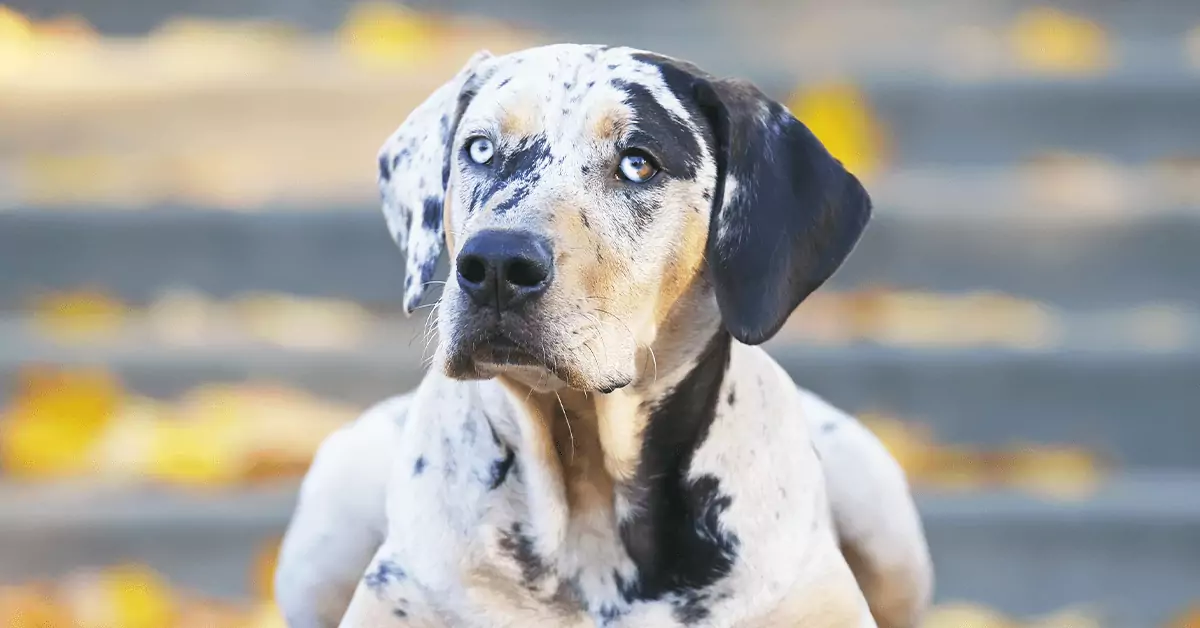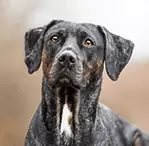
Meet the Catahoula Leopard Dog
Protective Pooch
Top Working Dog
Best Fur Friend
My Many Looks
My Breed Characteristics
Furbulous Fact
As I Grow Up
History of My Breed
Care Tips
Training Tips
Personality
Independent
Loyal
Playful
Group
Foundation Stock Service
Origin
Louisiana
Life Span
10-14 Years
Breed Popularity
No Rank
Height Range
20-24 Inches
Weight Range
50-95 Pounds
Coat Details
Type
Short-Medium Length
Texture
Smooth
Features
Colors
Black; Blue; Blue Merle; Brindle; Chocolate; Red; Yellow; Red Merle; White Merle; Yellow Merle; +/-
Hypoallergenic
Cost to Buy
$400-$900
Lifetime Care Cost
$12,000
My Many Looks
My Breed Characteristics
Furbulous Fact
As I Grow Up



History of My Breed
Care Tips
from Dr. Jessica Greenberg, Associate VeterinarianTest your pup’s hearing.
Dogs like Catahoulas that carry the gene for merle coat color are at risk for unilateral or bilateral deafness. It is recommended to have any puppy that you want to purchase tested for hearing by your veterinarian. There is no cure for hereditary deafness.
Watch for signs of hip dysplasia.
Hip dysplasia is a genetic disorder that causes abnormal development of the hip joint, leading to osteoarthritis, pain, and loss of mobility. This condition can be treated with surgery, however, the best plan is to purchase a puppy from a breeder that has certified their breeding stock to be free of joint dysplasias via the Orthopedic Foundation of America (OFA).
Conduct genetic testing to check for potential issues.
As with all dogs, there are some genetic conditions that potential owners should be aware of in order to avoid when purchasing a puppy. Do not hesitate to ask any breeder that their breeding stock is certified to be free of these conditions, and require a health guarantee.
Training Tips
from Dr. Jessica Greenberg, Associate VeterinarianGive your Catahoula a job to do.
Catahoulas were bred to work and they respond well to tasks. They thrive on learning new things, so constantly teach your Catahoula new tricks. This can be as simple as giving them a toy and instructing them to hold it while you eat dinner, or as extensive as putting them in agility training. Giving them a job reinforces their role in the house and will keep them on their best behavior.
Introduce your dog to swimming at a young age.
Catahoulas have webbed feet and are fit for playing in the water. They should be introduced to water while they’re young so that they can have fun in the water their whole lives. It’s a great outlet for exercise and fun, and another way to keep your pup busy.
Exercise your Catahoula’s mental muscles.
Catahoula Leopard Dogs need more than just physical exercise, they need mental stimulation to remain on their best behavior. Without this kind of stimulation, they can become destructive in the home. Be wary of letting your dog’s training plateau. All dogs thrive from opportunities to keep learning new things.
My Many Looks
My Breed Characteristics
Furbulous Fact
As I Grow Up
History of My Breed
Care Tips
Training Tips
-
Personality
Independent
Loyal
Playful
-
Group
Foundation Stock Service
-
Origin
Louisiana
-
Life Span
10-14 Years
-
Breed Popularity
No Rank
-
Height Range
20-24 Inches
-
Weight Range
50-95 Pounds
-
动物皮毛
Type
Short-Medium Length
Texture
Smooth
Features
Colors
Black; Blue; Blue Merle; Brindle; Chocolate; Red; Yellow; Red Merle; White Merle; Yellow Merle; +/-
-
Hypoallergenic
-
Cost to Buy
$400-$900
-
Lifetime Care Cost
$12,000



